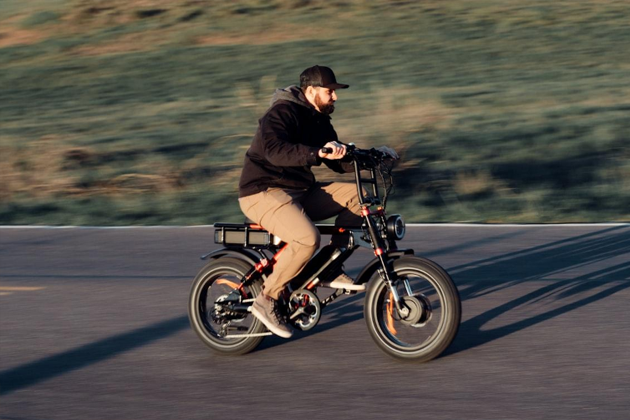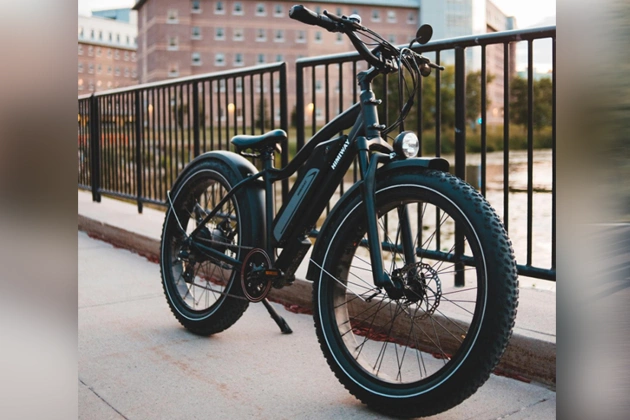Urban landscapes are evolving rapidly, and delivery systems are transforming alongside them. As cities become denser and traffic congestion worsens, businesses are seeking faster, cleaner, and more efficient ways to get goods into the hands of customers. Electric bike (E-bike) delivery services are emerging as a powerful solution, combining sustainability with speed to meet the demands of modern commerce.
E-bike delivery services have gained popularity across industries ranging from food and grocery to eCommerce and courier operations. Their ability to navigate crowded streets, reduce environmental impact, and lower operational costs makes them an increasingly attractive alternative to traditional vehicles.
The Rise of E-Bike Delivery in Modern Cities
Urban delivery systems face mounting challenges. Traffic congestion causes delays, emissions regulations are tightening, and consumer expectations for fast, affordable shipping continue to grow. Against this backdrop, electric bikes offer a practical and innovative answer.
Cities across Europe, North America, and Asia are investing in cycling infrastructure, making E-bike delivery both viable and efficient. Courier companies and retailers are embracing these vehicles to streamline operations and reduce their carbon footprints. A well-trained E-bike courier can maneuver through traffic, access pedestrian areas, and make deliveries more efficiently than vans or cars during peak hours. The rise of eCommerce has further accelerated this trend. With last-mile delivery becoming one of the most expensive and polluting segments of the supply chain, businesses are turning to E-bikes to deliver quickly without adding to urban congestion.
Reducing Environmental Impact and Emissions
One of the most significant advantages of E-bike delivery is its contribution to cleaner cities. Traditional delivery vehicles emit large quantities of greenhouse gases and pollutants, which worsen air quality and contribute to climate change. E-bikes, powered by rechargeable batteries, produce zero tailpipe emissions and consume far less energy than motorized vehicles.
Studies show that replacing even a fraction of urban delivery vans with E-bikes can lead to measurable reductions in carbon dioxide emissions. This shift supports municipal goals for cleaner air and healthier communities while helping companies meet sustainability targets.
E-bike delivery minimizes noise pollution. Unlike combustion engines, electric motors operate quietly, which improves the urban soundscape and reduces disturbances in residential neighborhoods. This benefit is particularly relevant for late-night or early-morning deliveries, where noise restrictions can limit the use of larger vehicles.
Improving Delivery Speed and Efficiency
Electric bikes excel in congested urban environments where cars and trucks struggle. They can take advantage of bike lanes, cut through narrow streets, and avoid traffic bottlenecks that often delay traditional delivery methods. As cities continue to expand bike-friendly infrastructure, E-bike couriers can complete more deliveries in less time.
For short and medium distances, E-bikes are often faster than vans. They can park directly at delivery points, eliminating the time spent searching for legal parking spots. In busy downtown areas, this parking advantage alone can save several minutes per delivery, which adds up significantly over the course of a day.
Businesses using E-bike delivery often see improved route optimization. Couriers can adjust routes dynamically to avoid delays, making the system more flexible and resilient. This agility leads to faster delivery times, higher customer satisfaction, and increased operational efficiency.
Lowering Operational and Maintenance Costs
Operating a fleet of cars or vans involves significant expenses, including fuel, insurance, parking fees, and maintenance. E-bikes offer a cost-effective alternative with much lower ongoing costs. Charging batteries is far cheaper than fueling vehicles, and E-bikes require less maintenance because they have fewer mechanical components than motorized vehicles.
Insurance costs are typically lower for E-bikes, and cities often offer incentives or subsidies for businesses adopting sustainable transportation methods. These financial advantages make E-bike delivery particularly appealing for small and medium-sized enterprises looking to expand their delivery capabilities without taking on excessive costs.
Fleet managers can scale E-bike delivery operations more easily, adding couriers without the need for expensive vehicle purchases or complex licensing requirements. This scalability supports business growth while keeping expenses predictable and manageable.
Expanding Accessibility and Coverage in Urban Areas
Many urban environments have areas where motorized vehicles are restricted or impractical. Pedestrian zones, narrow alleys, and limited-access districts often pose challenges for traditional delivery methods. E-bikes, by contrast, can easily enter these spaces, enabling couriers to reach customers in locations that vans cannot access efficiently.
This accessibility expands delivery coverage, allowing businesses to serve more neighborhoods and reduce delivery delays. For example, restaurants and retailers located in city centers can rely on E-bike couriers to provide quick service to surrounding areas without violating traffic restrictions or facing fines.
E-bikes are well-suited for mixed-use developments where residential, commercial, and recreational spaces are closely integrated. Couriers can deliver goods seamlessly between these zones, supporting modern urban planning models that emphasize walkability and reduced vehicle dependence.
Supporting Healthier and Happier Couriers
E-bike delivery offers physical and mental health benefits for couriers. Riding an E-bike provides regular exercise while the electric motor assists during challenging terrain or long routes, making the work physically sustainable. Couriers often report increased job satisfaction compared to driving, as they experience less stress from traffic and enjoy more active workdays.
Healthier couriers are less likely to experience burnout or absenteeism, leading to more consistent service. Companies that support courier well-being often see lower turnover rates and higher employee morale, which translates to better customer experiences.
Some businesses integrate wellness initiatives into their E-bike delivery programs, offering incentives for sustainable commuting or providing safety and fitness training. These measures foster a positive workplace culture and align business practices with broader health and sustainability goals.
Integrating Technology for Smarter Operations
Modern E-bike delivery systems benefit from technological integration that enhances both efficiency and reliability. GPS tracking, route optimization software, and real-time communication tools allow businesses to manage fleets with precision. Dispatchers can monitor deliveries in real time, assign tasks dynamically, and respond quickly to unexpected changes in demand.
E-bike couriers equipped with mobile apps receive optimized routes and instant updates, reducing idle time and improving performance. Customers benefit from accurate delivery windows and live tracking, which increases transparency and satisfaction.
Some companies are experimenting with IoT-enabled E-bikes that provide data on battery usage, maintenance needs, and performance metrics. This data-driven approach allows for predictive maintenance, ensuring that bikes remain in good working condition and minimizing downtime.
Aligning With Urban Policy and Infrastructure Trends
Many cities are actively encouraging sustainable transportation to combat congestion and reduce harmful emissions. Urban planners and policymakers recognize that traditional delivery vehicles contribute significantly to air pollution, noise, and traffic delays. As a result, they are implementing policies that promote cycling infrastructure, restrict vehicle access in dense urban areas, and incentivize greener delivery methods.
Initiatives such as low-emission zones, congestion charges, and stricter parking regulations make it increasingly challenging for traditional vans and trucks to operate efficiently in city centers. These changes create an environment where E-bike delivery services can flourish.
Governments and municipalities are taking proactive steps to support this transition. Many offer grants, subsidies, and tax incentives to businesses that adopt sustainable delivery solutions. Some cities provide dedicated funding for fleet electrification or partner with logistics companies to run pilot programs that test new E-bike delivery models. By participating in these programs, businesses can access financial support while contributing to broader environmental goals. In some regions, city governments collaborate with private sector partners to build shared micro-distribution hubs, making it easier for couriers to pick up goods and complete last-mile deliveries using E-bikes.
By embracing E-bike delivery, companies align themselves with these evolving urban policy goals, positioning their operations as forward-thinking, adaptive, and environmentally responsible. This alignment goes beyond compliance; it demonstrates a commitment to shaping the future of urban mobility.
Elevating Brand Image Through Sustainability
Consumers are increasingly conscious of environmental and social issues, and their purchasing decisions often reflect these values. In urban markets where competition is intense and options are abundant, a company’s commitment to sustainability can be a defining factor in customer loyalty. Businesses that adopt sustainable delivery methods, such as E-bike fleets, can strengthen their brand image by signaling that they are aligned with the priorities of modern, eco-conscious consumers. Highlighting the use of electric bikes in marketing campaigns, websites, and promotional materials showcases tangible actions rather than vague promises, which resonates strongly with audiences looking for authenticity.
Incorporating sustainability into delivery strategies provides a compelling narrative that companies can use to differentiate themselves. Promoting the use of E-bikes demonstrates a genuine commitment to reducing emissions, lowering environmental impact, and supporting the development of cleaner, greener cities. Consumers are more likely to support businesses that take visible steps toward addressing climate challenges in sectors like food delivery, grocery services, and eCommerce where delivery is central to the customer experience.
Sustainable practices can set businesses apart in competitive markets. For example, a restaurant or retailer that prominently features its eco-friendly delivery methods may be viewed as more forward-thinking and responsible than competitors who rely solely on traditional vans.
Electric bike delivery services offer cities and businesses a powerful way to address the challenges of modern urban logistics. They reduce emissions, improve delivery speed, lower costs, and increase accessibility, all while supporting healthier couriers and aligning with sustainable policies.
By integrating technology, embracing forward-thinking infrastructure trends, and leveraging their environmental benefits, E-bike delivery systems create more efficient and livable cities. As urban populations grow and environmental concerns intensify, the role of E-bikes in delivery will only expand, reshaping the future of last-mile logistics.
Businesses that invest in this model today position themselves as leaders in sustainable innovation, ready to meet the evolving needs of cities and consumers alike.











